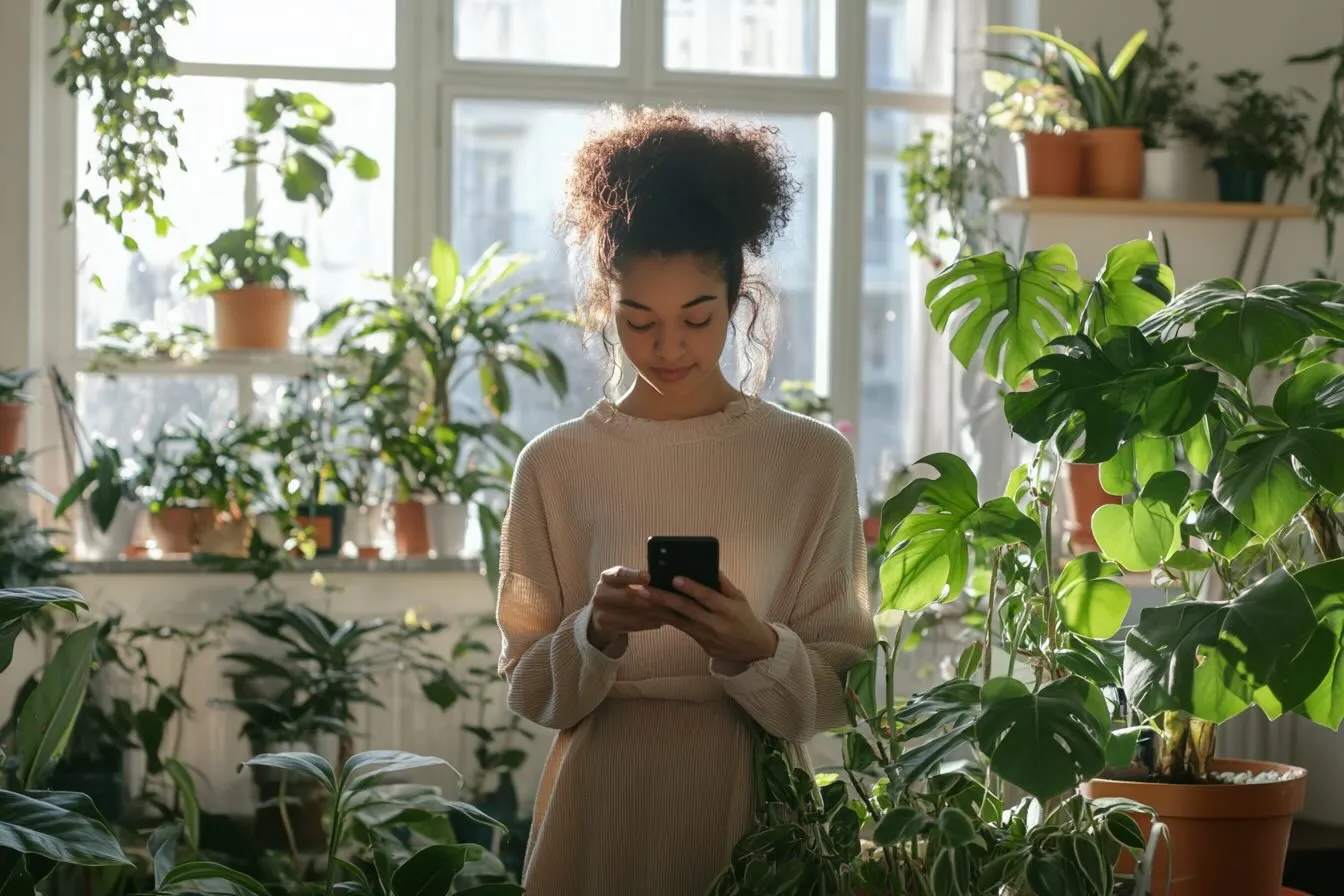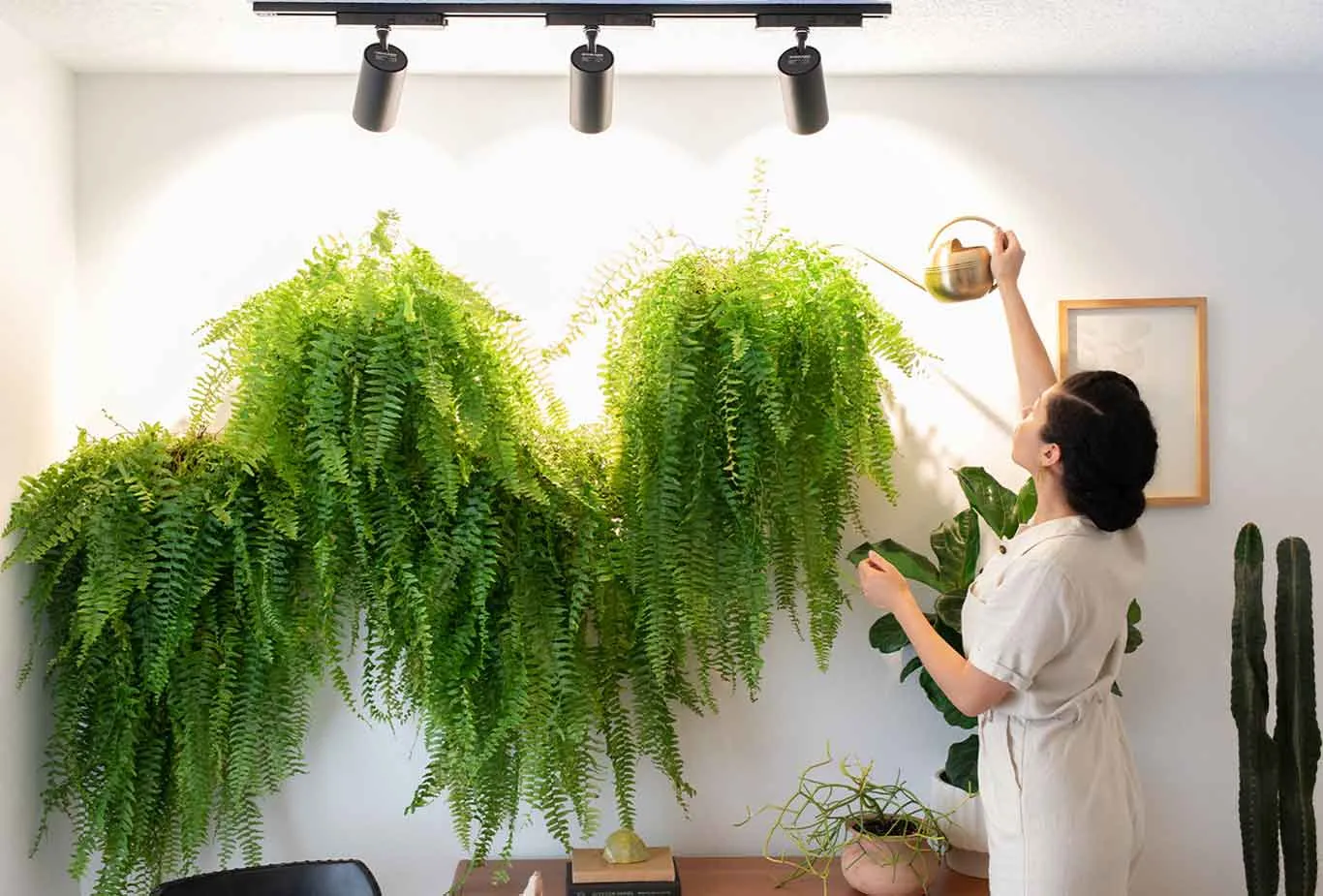
Auto-Translate
Lighting for Houseplants
Recommended PPFD and DLI levels, common lighting issues, and more

Beyond "Bright" and "Indirect" Light
Traditional advice often oversimplifies plant lighting needs to broad categories like "bright indirect light" or "low light." While these terms can be helpful starting points, they lack the precision needed for optimal plant care. This guide will introduce you to more accurate methods of measuring and providing light for your houseplants using PPFD and DLI.
If you're unsure what these terms mean, take a look at the following article:

DLI Requirements and Light Preferences
For optimal growth, aim to provide a DLI within the recommended range for your specific plant, while also respecting its light intensity preference (direct or indirect light). The table below offers guidance on both DLI ranges and light preferences for common houseplants:
| Plant | DLI Level | Light Preference |
|---|---|---|
| Cactus | 20 – 25 | Direct |
| Citrus | 20 – 25 | Direct |
| Aloe | 20 – 25 | Direct |
| Palm Trees | 18 – 25 | Direct to Indirect |
| Flowering Plants | 15 – 25 | Varies |
| Hoya | 15 – 25 | Indirect to Direct |
| Croton | 15 – 20 | Indirect to Direct |
| Ficus | 15 – 20 | Indirect to Direct |
| Jasmine | 12 – 18 | Indirect to Direct |
| Peperomia | 12 – 18 | Indirect |
| Monstera | 8 – 12 | Indirect |
| Aglaonema | 8 – 12 | Indirect |
| Calathea | 8 – 12 | Indirect |
| Ivy | 7 – 12 | Indirect |
| Fern | 6 – 10 | Indirect |
| Dracaena | 6 – 14 | Indirect |
| Parlor Palm | 6 – 12 | Indirect |
| Aspidistra | 5 – 10 | Indirect |
| Alocasia | 5 – 10 | Indirect |
| Dragon Tree | 5 – 10 | Indirect |
| ZZ Plant | 5 – 10 | Indirect |
| Spider Plant | 5 – 10 | Indirect |
| Snake Plant | 5 – 10 | Indirect |
| Succulents | 5 – 10 | Direct |
| Peace Lily | 5 – 10 | Indirect |
| Pothos | 5 – 10 | Indirect |
| Philodendron | 5 – 10 | Indirect |
| Syngonium | 5 – 8 | Indirect |
| Orchid | 4 – 8 | Indirect |
Remember that while DLI tells you about the total light received, the light preference indicates how intense that light should be delivered. Both factors are important for creating the ideal lighting conditions for your houseplants.
Light Preference: Direct or Indirect Light
Direct Light (High PPFD): High DLI plants generally require some direct, strong light. PPFD levels for direct light typically range from 500 to 1000+ µmol/m²/s.
Indirect Light (Lower PPFD): Plants that require medium or low DLI prefer indirect, less intense light. PPFD levels for indirect light typically range from 50 to 400 µmol/m²/s. A little direct sunlight is usually acceptable if the plant shows no signs of burning.
Recognizing and Solving Common Lighting Problems
Problem: Too much light can cause leaf burn or yellowing, while insufficient light often results in leggy growth or small leaves.
Solution: Adjust plant positioning or light sources accordingly. Rotate plants regularly to prevent uneven growth caused by reaching towards light sources.
Practical Tips for Optimizing Plant Lighting
Keep leaves clean to maximize light absorption and group plants with similar light needs for easier care and to create beneficial microclimates. Most importantly, observe your plants closely – they'll often indicate if they need a change in their lighting conditions.
Seasonal Lighting Considerations
As seasons change, so does the quality and quantity of natural light in your home. Summer brings longer days and more intense light, potentially requiring protection for sensitive plants. Winter's shorter days and weaker light might necessitate moving plants closer to windows or supplementing with artificial light. Use spring and fall to gradually acclimate your plants to changing light conditions.
Supplementing With Artificial Light
When natural light is insufficient, artificial lighting can help. LED grow lights are energy-efficient and customizable to plants' needs. Fluorescent lights work well for seedlings and low-light plants. When setting up artificial lighting, consider both intensity and duration, starting with 12-14 hours of light per day and adjusting based on your plants' responses.

Bonus Tips
| Keep plants away from air conditioners, heating vents, and doorways |
| Measure repeatedly and regularly |
| Look at what your plants tell you |
| if your plant seems happy and healthy, let it be |
